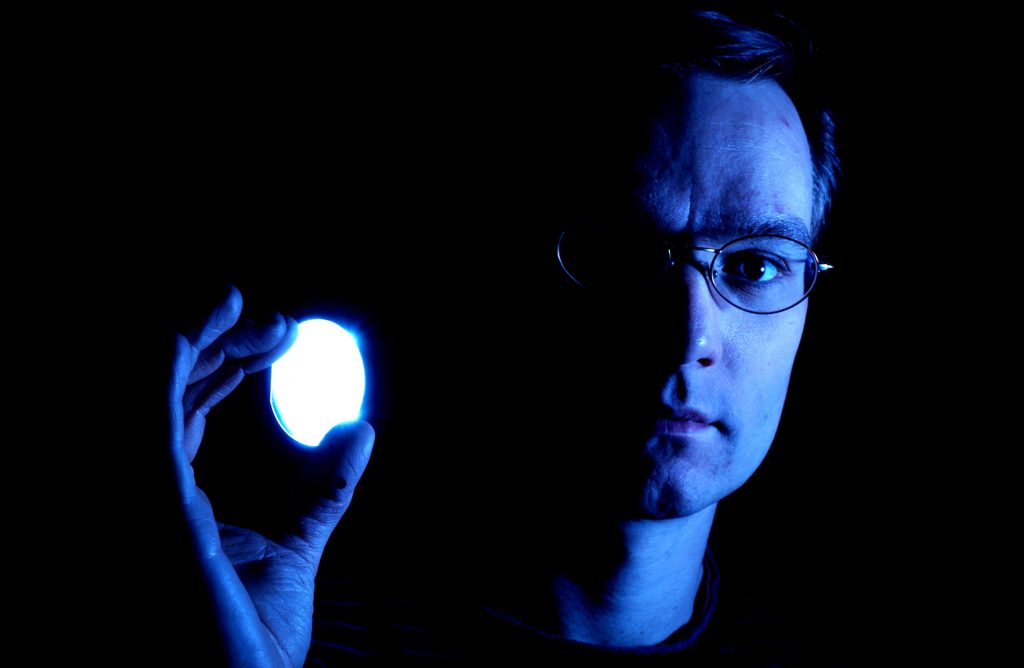
ALBUQUERQUE, N.M. — A revolution is quietly occurring that promises to change the way we light our homes, offices, and world. Sandia National Laboratories is among the research entities around the country at the forefront of the revolution.
Some 25 Sandia researchers are working on an project that will establish the fundamental science and technology base to replace the country’s primary lighting source, incandescent bulbs and fluorescent tubes, with semiconductor light-emitting diodes (LEDs) — solid state lighting.
Sandia Senior Scientist James Gee, together with department managers Jerry Simmons and Bob Biefeld, head up the project.
“In some ways the revolution in lighting can be compared to the revolution in electronics that began 50 years ago and is only now reaching maturity,” Gee says. “Just as for electronics, glass bulbs and vacuum tubes are giving way to semiconductors. And as in the microelectronics revolution, many of the possible applications for solid-state lighting will occur in ways that have not yet been envisioned.”
LEDs are already found in toys, electronics, traffic lights, automobile signals, and large outdoor displays — devices that require durability, compactness, and cool operation. In some applications they also enable significant cost savings due to their lower consumption of energy: LED-based red traffic lights, for example, consume one-tenth the energy of their incandescent counterparts, enabling them to pay for themselves in as little as one year.
As LED technology matures, revolution leaders expect solid-state lighting to also rapidly outdistance conventional lighting sources in both performance and cost.
“This new white light source could change the way we live, and the way we consume energy,” says Simmons, who manages the project. “LEDs could be 10 times more efficient than incandescent bulbs and two times more efficient than fluorescents. Clearly, LEDs’ replacement of conventional light sources would significantly reduce worldwide energy consumption.”
Lighting is presently responsible for roughly 20 percent of electricity consumption. Researchers believe that the development and adoption of solid state lighting technology could reduce the nation’s electrical consumption by 10 percent.
LEDs were first demonstrated in 1962 by General Electric. The first products were introduced in 1968 — indicator lamps by Monsanto and an electronic display by Hewlett-Packard. However, LEDs were limited to small-signal applications until 1985 when LED power was increased, resulting in new applications. In 1993 researchers at several universities in the US and Japan developed a fairly efficient blue light LED based on gallium nitride. Efficiency improvements followed quickly. Today, energy-efficient LEDs are available from red to green to blue light, making it possible to generate white light for illumination.